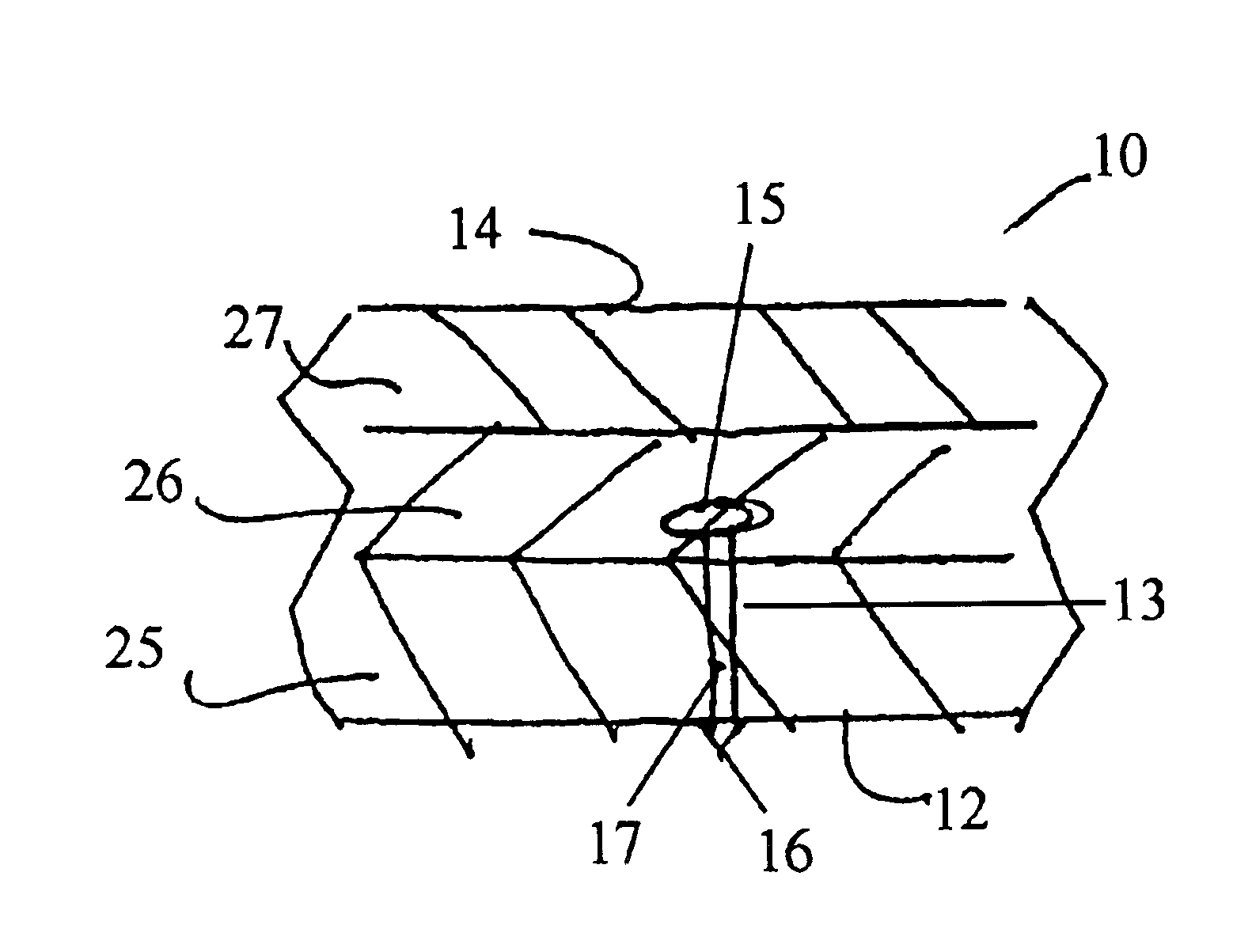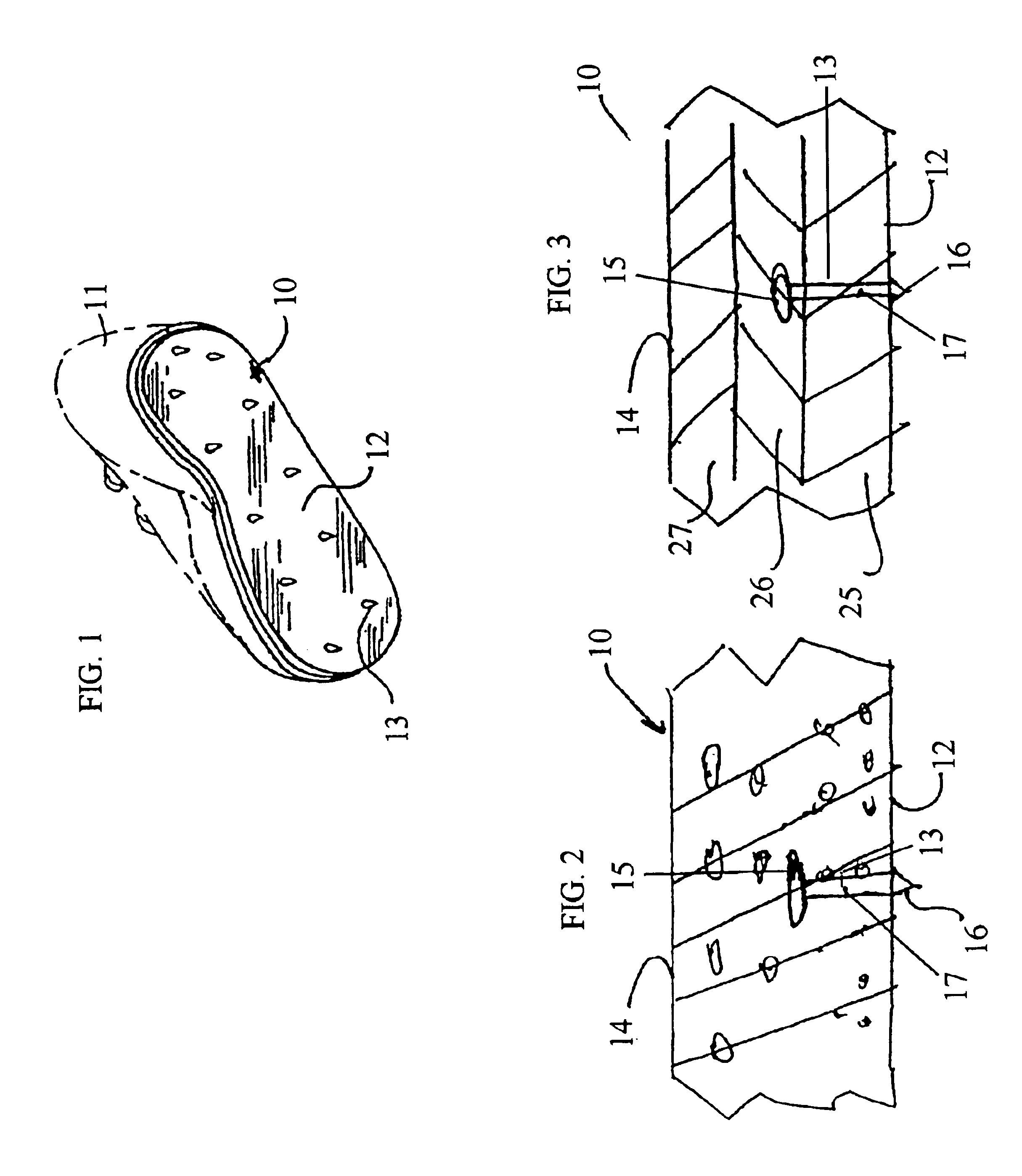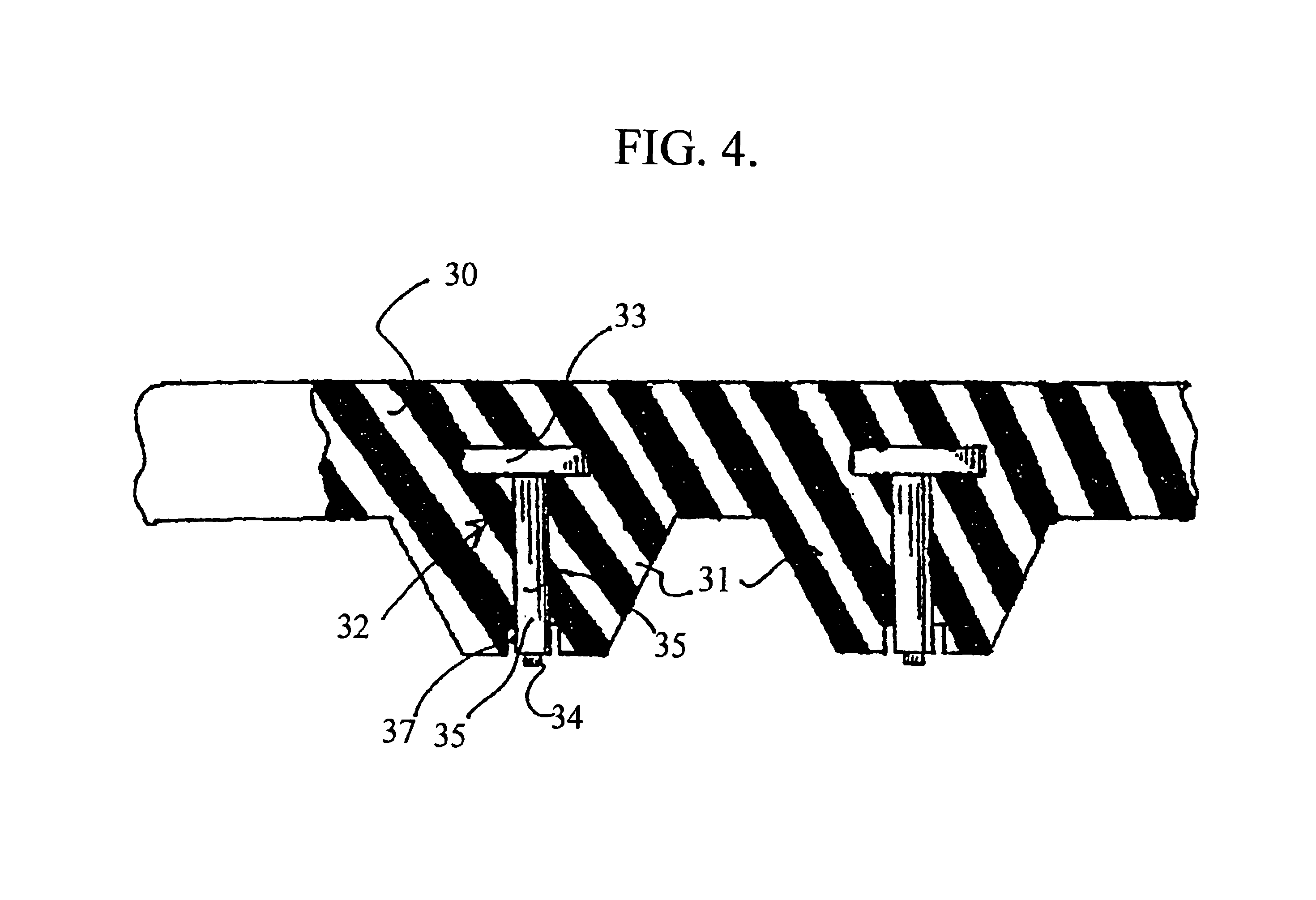Resilient, all-surface soles for footwear
a technology of all-surface soles and soles, which is applied in the direction of uppers, bootlegs, stiffners, etc., can solve the problems ofsoles not having uniform resilience or density
- Summary
- Abstract
- Description
- Claims
- Application Information
AI Technical Summary
Benefits of technology
Problems solved by technology
Method used
Image
Examples
Embodiment Construction
[0020]Referring now to the drawings, and in particular to FIG. 1 thereof, what is shown in an all-surface sold 10 in place on footwear 11. Sole 10 may be permanently attached to shoe 11 or may be removable therefrom and placed, either with another, similar sole after excessive wear, or with another sole that has different characteristics.
[0021]As generally shown, sole 10 has a bottom, work-contacting surface 12, from which protrude a plurality of metal studs 13. The upper surface 14 of the sole is not seen in FIG. 1, but lies in juxtaposition to the upper of the shoe 11. The pattern in which the studs 13 are arranged is predetermined and is not considered to be part of the present invention.
[0022]The structure of a stud 13, which is preferably made of metal, is best seen in FIGS. 2 and 3. As is the case with the studs of my U.S. Pat. No. 5,634,283, each stud 13 is formed with an anchoring portion 15, a tip portio 16, and a cylindrical or conical shank or shaft portion 17 so that it ...
PUM
 Login to View More
Login to View More Abstract
Description
Claims
Application Information
 Login to View More
Login to View More - R&D
- Intellectual Property
- Life Sciences
- Materials
- Tech Scout
- Unparalleled Data Quality
- Higher Quality Content
- 60% Fewer Hallucinations
Browse by: Latest US Patents, China's latest patents, Technical Efficacy Thesaurus, Application Domain, Technology Topic, Popular Technical Reports.
© 2025 PatSnap. All rights reserved.Legal|Privacy policy|Modern Slavery Act Transparency Statement|Sitemap|About US| Contact US: help@patsnap.com



